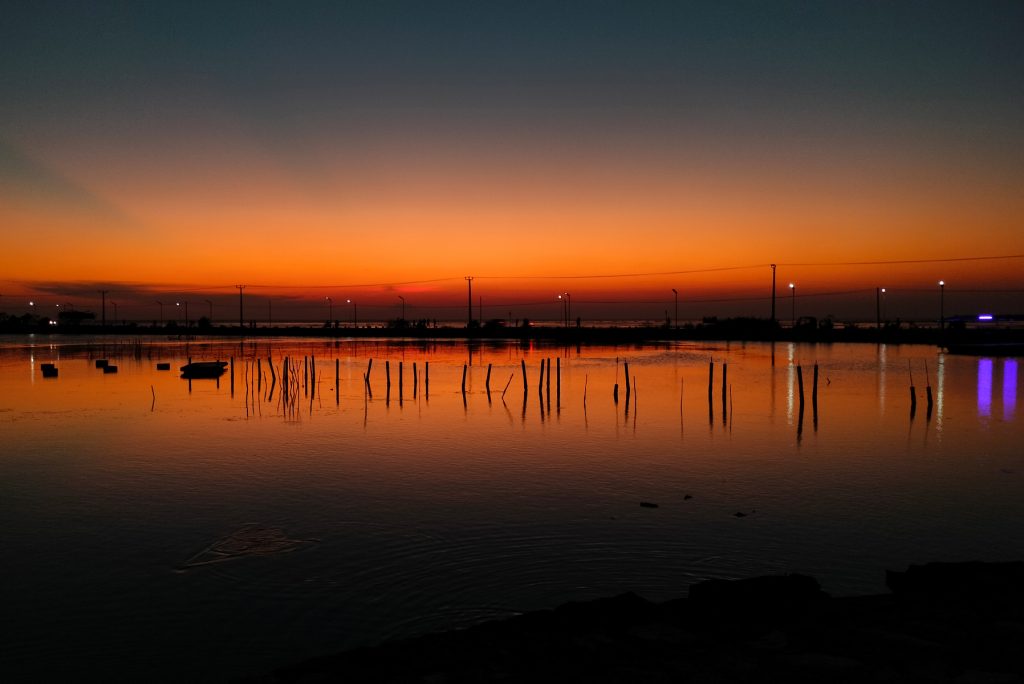
As the plane lands at Jaffna’s Palaly airport, you feel excited with a sobering awareness of the not-so-distant ethnic war and strife that had plagued this small town in the northern province of Sri Lanka. Even today, one side of the airport road is guarded by soldiers, juxtaposed with abandoned buildings, bullet-riddled structures, and undulating green fields guarded with barbed wires and warning boards of landmines… all signs of the terrible civil war that had torn asunder the social fabric of this once beautiful peninsula of northern Lanka. A bitter, cruel war between the Liberation Tigers of Tamil Eelam (LTTE) and the Sinhalese Army that lasted for nearly three decades from 1983 to 2009.
“That temple you are looking at is new. It was built post-war,” says our tour guide Sunmugalingam Thillai Nadesan (hired through www.jaffnatours.net), pointing to a Hindu temple with a colourful gopuram (pyramidal tower) on the outskirts of the city. A Sri Lankan Tamil who lost his father at the age of three during the civil war, he assures us that “as you get closer to the city, it’s a different sight… fancy hotels, busy bazaars, colourful roadside stalls. You’ll even spot vintage cars and a few luxury vehicles too,” he smiles. So, has the economic crisis that gripped the island nation in 2019 crippled Jaffna too, I ask him. “We have been living in a state of poverty since the civil war; so for us in this region, the economic crisis wasn’t a big deal. But of course, the southern part was badly affected.”
The presence of the military with their armoured vehicles and their omnipresent troops littered across Jaffna is a reminder of the final phase of the war in which Tamil rebels were annihilated in 2009.
After checking into our hotel, we lost no time to get to Valvettithurai, the birthplace of LTTE chief Vellupillai Prabhakaran, where a stunning coastline stretches towards east to Point Pedro. Enjoy a leisurely stroll along the narrow white sand beach nestled between a coral reef and rows of abandoned homes. The presence of the military with their armoured vehicles and their omnipresent troops littered across Jaffna is a reminder of the final phase of the war in which Tamil rebels were annihilated in 2009. But despite the violent past, the beauty of this coastal town is stunning. You can stand in a ruined doorway and admire fishermen casting their nets in the turquoise sea or laying out their fish to dry. On the day of our visit, the sun was intense, and the fishermen were enjoying a Coca-Cola break after pulling out a fishing net. We must have been staring at them drinking the cold drink because one fisherman kindly offered us a glass, which was gratefully accepted.
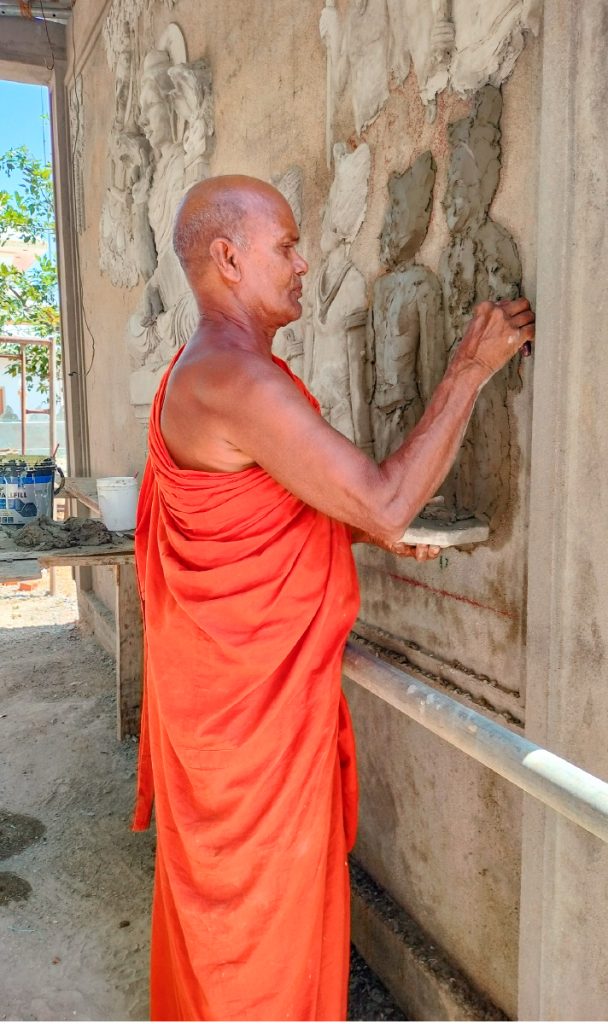
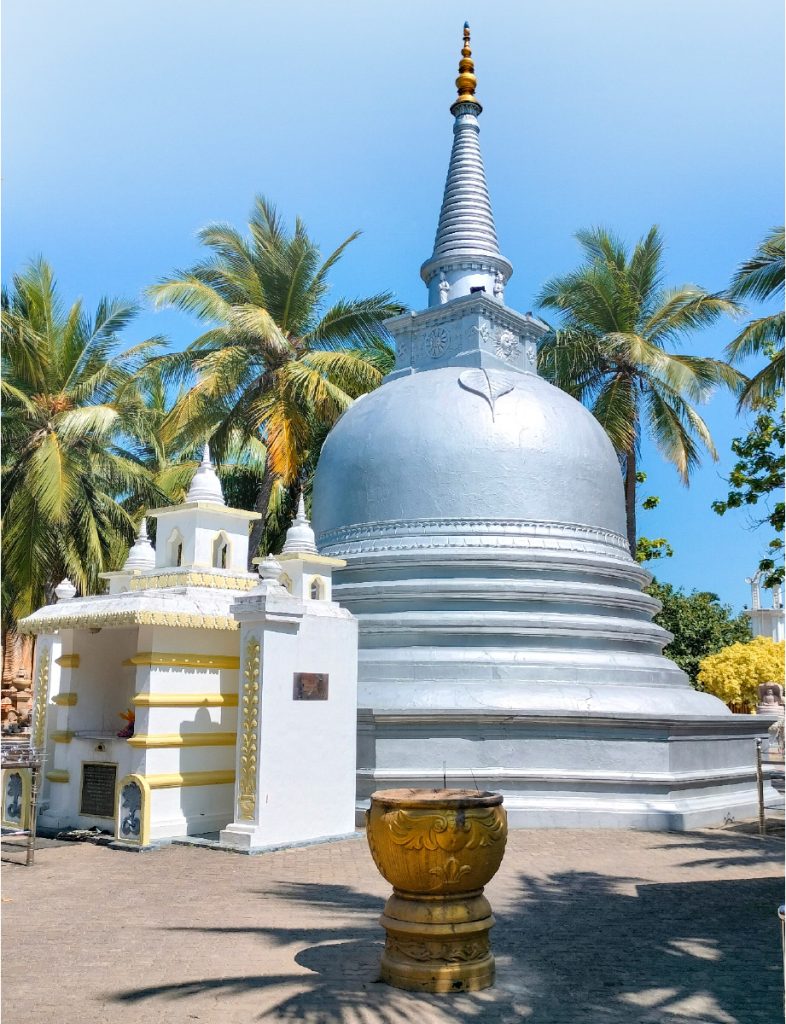
In Karaitivu, a small village enroute to the casuarina beach, Jeyapriya (20) and Kanthasami (67), were patiently intertwining palm leaves to make hats and mats. Here the locals sell a variety of palmyra crafts that fetch extra income for their families. They receive training and support from the Palmyrah Development Board, Sri Lanka, and that “has helped us in honing our weaving skills, gain financial independence and business planning,” says Kanthasami. Inside his thatched hut-cum-workspace, he has on display hats, baskets, mats, and storage boxes that he has made. He has worked as a palmyra weaver for over 30 years but is now considering retirement “due to poor health.” In his raspy voice, he tells us about the coveted artisan award he had won pointing to a citation plaque on the wall.
Unlike in India, there are no paid or special darshan privileges at this temple. The temple authorities uphold the centuries-old traditions and regulations, which apply to all visitors regardless of their status.
The road to the casuarina beach is dotted by palmyra trees and estuaries, presenting a scenic postcard image. It dawned on us that these trees hold far more significance than mere scenic beauty, as they are integral to the cultural and economic fabric of the local community. At the beach, the waves don’t crash but caress the white sands gently. Food stalls line the shore, offering local delicacies. Water sports are available for a fee that may be prohibitive for some.
At the Nallur Kandaswamy temple in Jaffna, it’s customary for men to remove their shirts as a token of reverence. The temple’s inner sanctum bears architectural similarity to the Guruvayur temple of Kerala. Unlike in India, there are no paid or special darshan privileges at this temple. Nadesan says “the temple authorities uphold the centuries-old traditions and regulations, which apply to all visitors regardless of their status.”
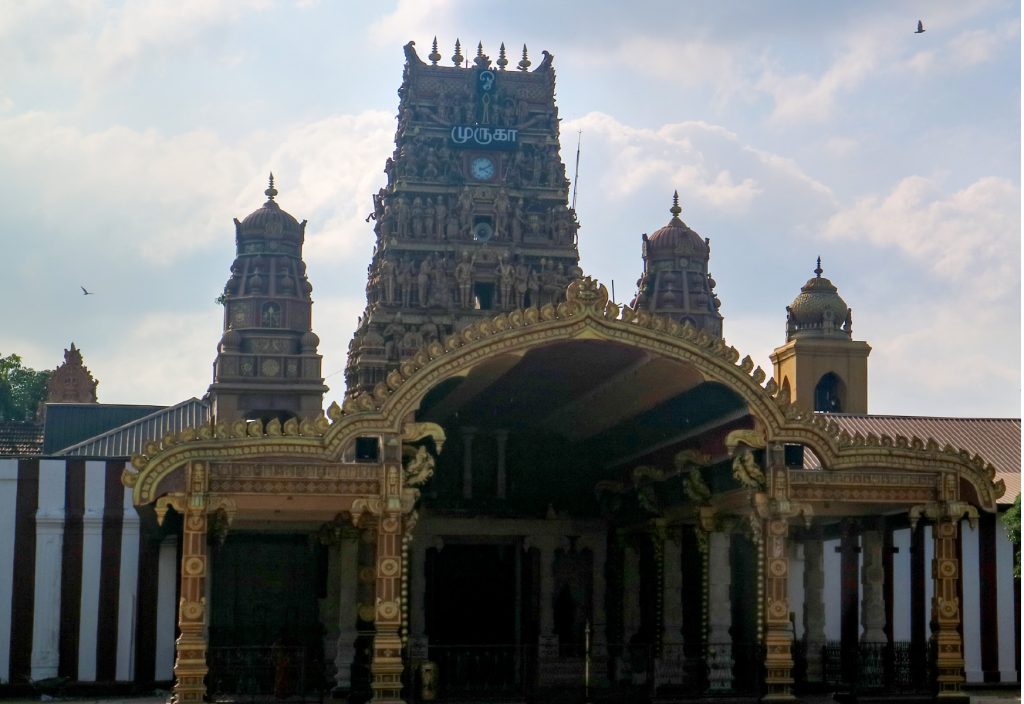
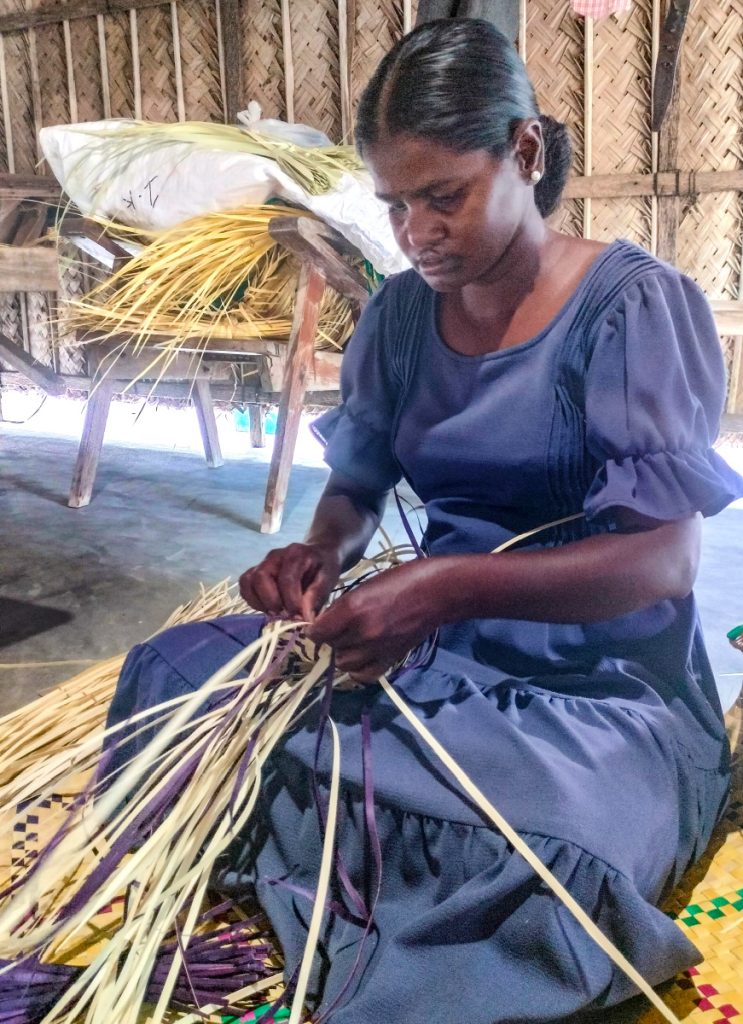
Another thing about Jaffna is that there are no street hawkers chasing or harassing tourists to buy stuff. The roadside vendors are also very polite. For instance, at the Keerimalai Pond, where you can see locals perform rituals and take a dip in the sacred water believed to have healing properties, a gooseberry seller was polite when we declined to buy from her. She even willingly posed for a picture afterward and gave us her WhatsApp number to receive the pictures we clicked together.
Outside Jaffna Fort, you may get a chance to watch a man with his monkey and two snakes staging an acrobatic show. He skilfully holds both snakes in each hand while the monkey dances to entertain the audience and collect money from it. Later, he invites the visitors to hold the snakes, which scares them all away.

Yet again you witness the ruins of the civil war as you step inside the fort. Originally built by the Portuguese in 1618 and later expanded by the Dutch, the fort has played a significant role in military defence and trade. Its coral bricks are riddled with bullet holes and the ruins of the church inside the fort are really chilling. But the sunset from the fort is breathtaking.
Jaffna cuisine bears resemblance to that of Tamil Nadu and Kerala, yet it boasts bold and fiery flavours. Some of the sambols and curries are heavily spiced with black pepper, cumin and coriander.
Parts of the Jaffna Library, reconstructed after it was burned down in 1981, remain inaccessible to visitors. The destruction of over 97,000 volumes of priceless Tamil literature and historical documents sparked outrage and ethnic tension between the Sinhalese and Tamils. The Mantri Manai, a significant royal landmark, is another site worth visiting in Jaffna.
Tiny beautiful Nainativu
Out of town and away from the shoreline, the tiny island of Nainativu lures Sri Lankan pilgrims and foreigners alike. Accessible via a local ferry from Kurikadduwan Jetty, journeying over the turquoise sea, this island is home to two coastal temples: the Hindu Naga Pooshani Amman Kovil and the Buddhist Nagadeepa Raja Maha Viharaya.

The highlight of our visit to Nainativu was meeting a Buddhist monk at the Viharaya working on a large mural depicting the Buddha in a king’s court. Curious, we inquired about the time needed to complete it, to which he responded with a smile. To our surprise, he showed us a video on his phone, revealing his craftsmanship in creating the 40 feet-tall Buddha statute standing on the temple premises. He invited us to add clay to the mural he was creating.
Flavours of Jaffna
Despite the war and poverty, “our local cuisine has stood the test of time. The kilangu roti and yarl kottu parotta are our comfort food,” says Nadesan as he hands us a kilangu roti to try at a roadside stall. This snack has a spicy potato filling wrapped in a wheat chapati and toasted on all sides, reminiscent of a samosa but with a healthier twist, as it’s free from maida and excess oil.
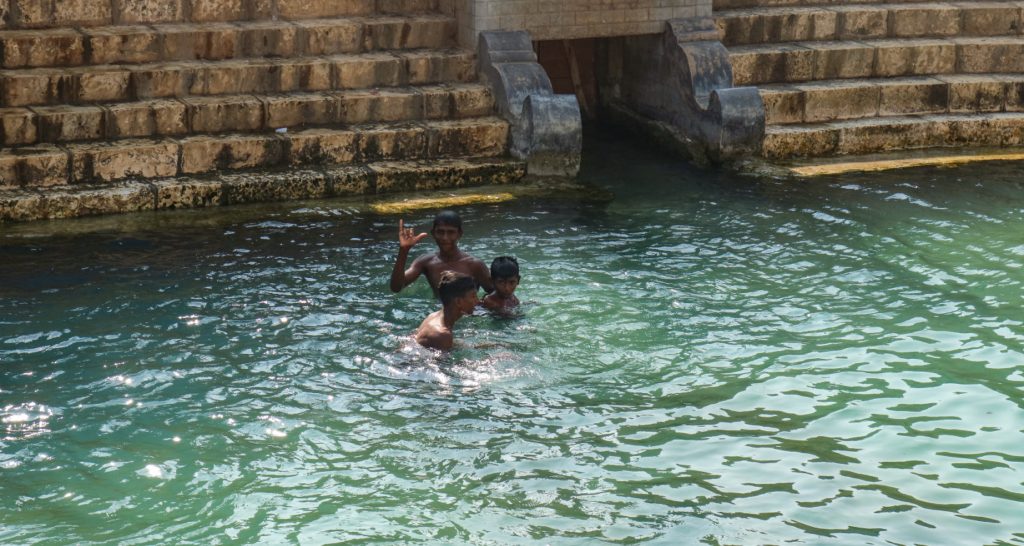
Jaffna cuisine bears resemblance to that of Tamil Nadu and Kerala, yet it boasts bold and fiery flavours. Some of the sambols (grated coconut chutney) and curries are heavily spiced with black pepper, cumin and coriander. Signature delicacies such as the spicy Jaffna crab curry and the tangy mango curry “are our culinary ambassadors, embodying our cultural heritage and gastronomic legacy,” says our guide proudly and they are a must-try.
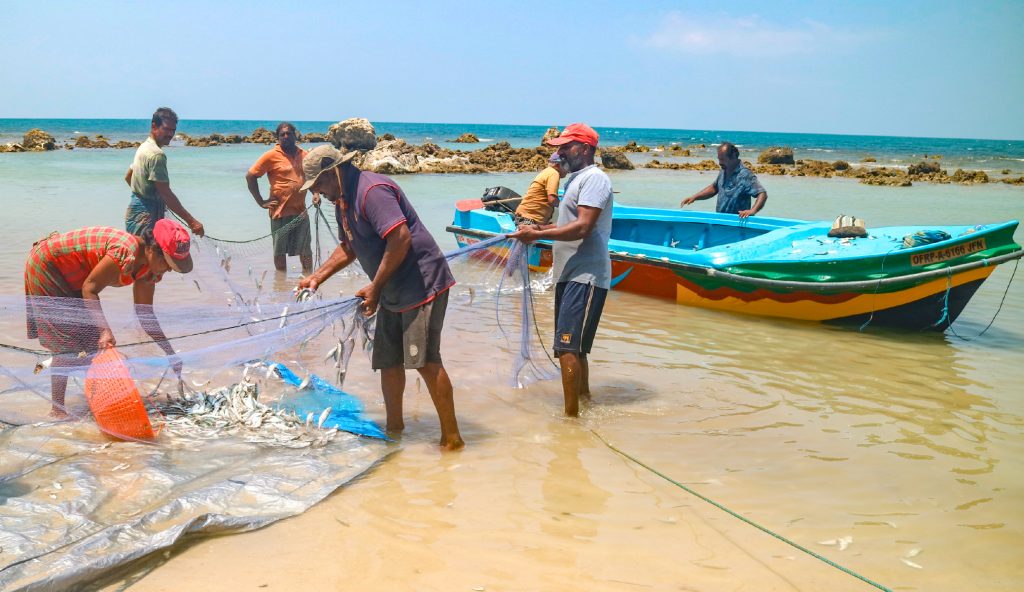
If you are interested in a typical South Indian meal then head to the Malayan Café, a vegetarian restaurant in the heart of Jaffna. It has vintage interiors and its menu is written on blackboard. Note: You have to clear your own table and throw your banana leaf inside a garbage chute once you finish the meal.
Whether it was our guide Nadesan, our tuk-tuk (autorickshaw) driver, or even Google, they would all recommend going to Rio Ice Cream. The sundaes here are amazing, and the portion substantial enough to skip dinner. Apart from the regular vanilla and chocolate flavours, try their dry fruit sundae — you’ll come back for a second one.
Pictures by Kiran Zehra






